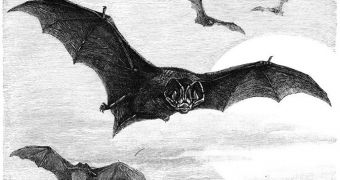At night, the skies overhead are filled with bats going about their business, catching insects and orienting their flight paths with echolocation. But some of these hunters are more well-trained than others.
In a scientific study conducted in the United Kingdom, at the University of Bristol, experts learned that bats of the species Barbastella barbastellus are better capable of approaching insects than other bats.
The group behind the investigation set out to determine precisely why that was. These particular bats apparently caught more moths than any other “peer,” but the reason for this success remained unknown.
Researchers discovered a long time ago that many a moth species have ear-like organs, with which they can detect the high-pitched sounds bats emit as they are orienting themselves mid-flight.
As such, the insects can easily steer clear of the impending threat, by executing evasive maneuvers. But their defenses appeared to be useless against the barbastelle bat.
The Bristol team carried out a series of experiments to determine the source of the bat's success, and determined that the creature had learned how to “whisper.”
That is to say, this particular bat could get within 3.5 meters of its prey without being detected, whereas other bats are detected as far as 30 meters away. The group combined three cutting-edge research techniques to conduct the investigation.
“Recording from the ear of a moth in the field was a real challenge but it yielded some amazing results,” says Dr Hannah ter Hofstede, who is based at the Bristol School of Biological Sciences.
“We modeled detection distances for bats and moths and found that by whispering, the barbastelle can hear the echo from an unsuspecting moth before the moth becomes aware of the approaching bat,” says Dr Holger Goerlitz, also from the university.
“This advantage, however, comes at the cost of reduced detection range, similar to us trying to navigate in the dark using a lighter instead of a spotlight,” he adds.
The echolocation calls the barbastelle bat emits were discovered to be about 100 times faster than those of other species. Bats navigate by emitting high-pitched sounds, and then listening for their echoes.
This allows their brains to produce a three-dimensional map of their environment.
“It’s a rare case in evolution that a predator wins the arms-race with its prey because the predator only loses its dinner, but the prey loses its life,” Goerlitz says.
Details of the investigation appear in the August 19 issue of the esteemed scientific journal Current Biology, in a paper entitled “An aerial-hawking bat uses stealth echolocation to counter moth hearing.”

 14 DAY TRIAL //
14 DAY TRIAL //